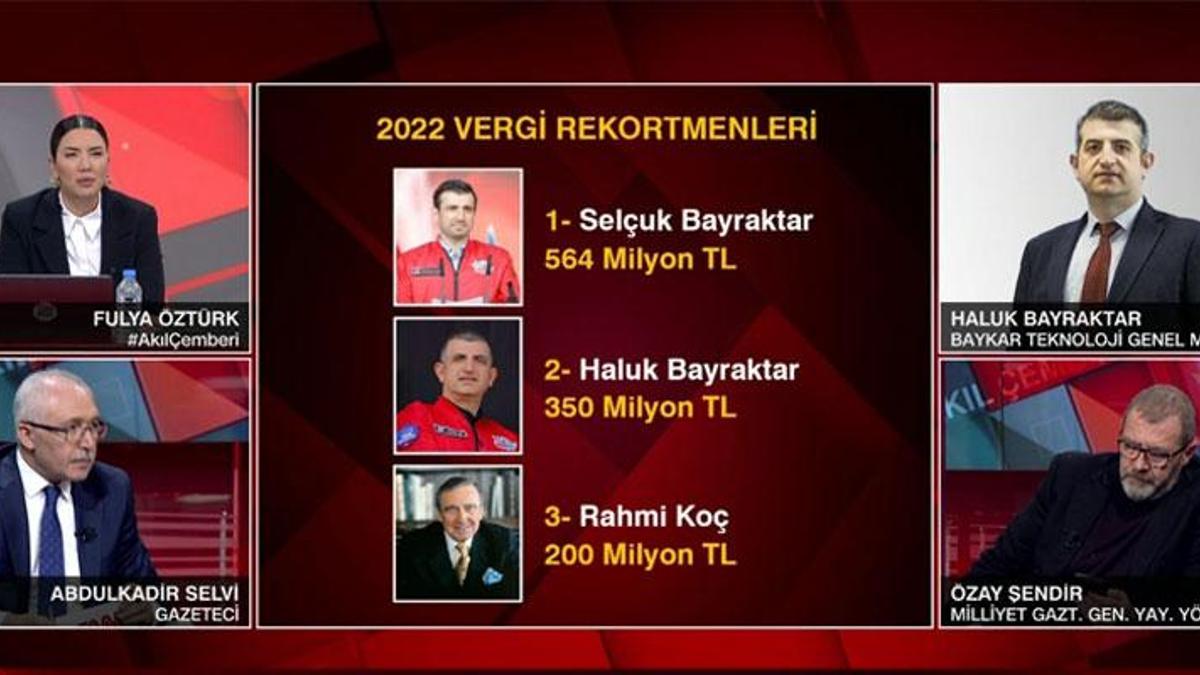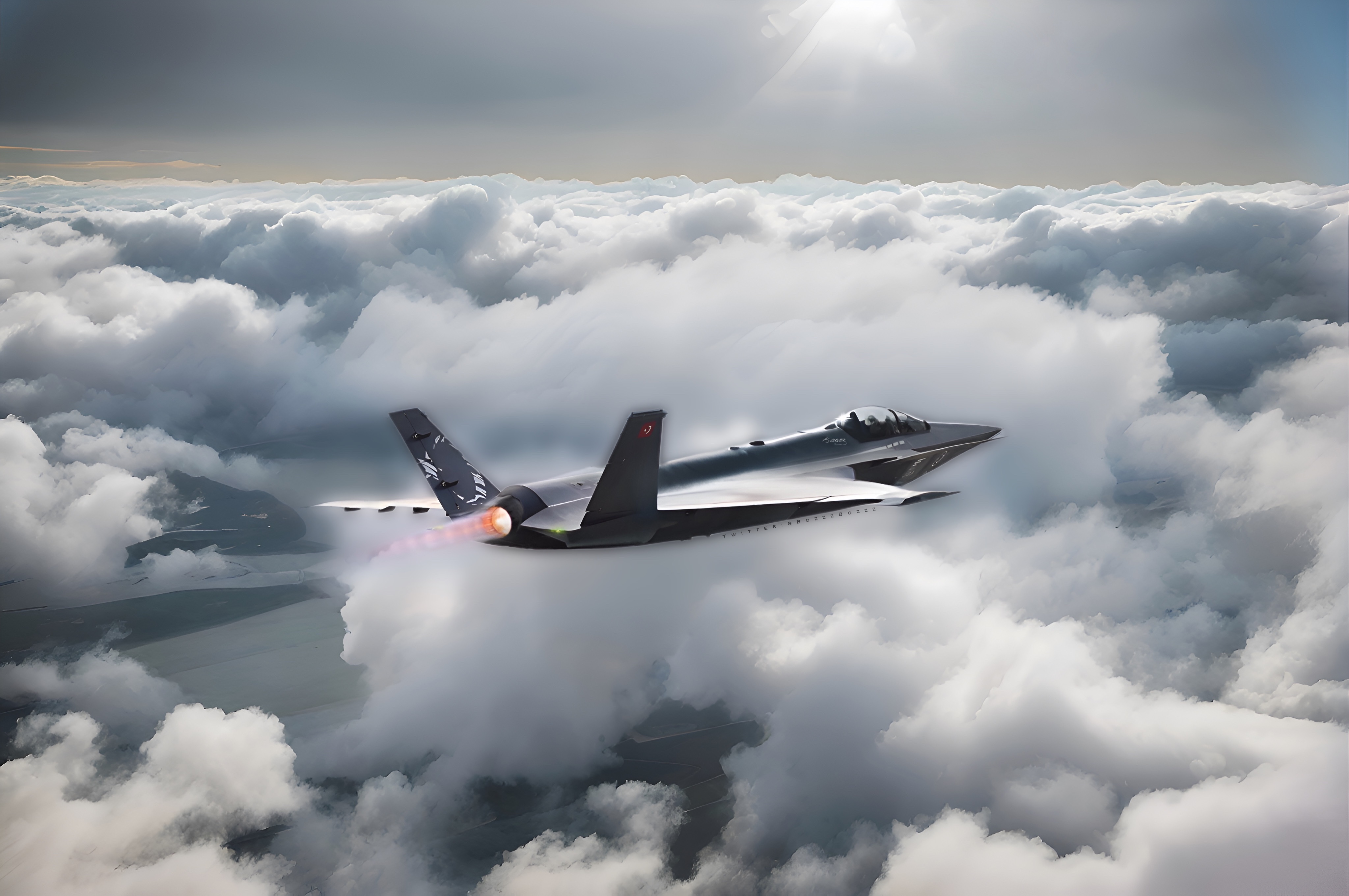I think we are still in the infancy of a project on a scale that can replace helicopters. We still have a long way to go. Also, this project cannot be done with the sector's own resources. Dzkk should lead this.It could help but I was thinking something bigger that we can arm and launch from our ships like a helicopter, or maybe even to replace them. But I agree that something that can loiter and hunt USVs after they are detected like BAHA or Alpagut could help protect our ships.
Latest Thread
You are using an out of date browser. It may not display this or other websites correctly.
You should upgrade or use an alternative browser.
You should upgrade or use an alternative browser.
There is one more option, latest STM brochure includes RF seeker payload for small drones like Kargu, so, RF seeking kamikaze drones can be a great option against aa targets as well.I have been keeping an eye on this class of UAV. Like Orlan-30 and RQ-21.
This type of UAV provide operational flexibility to the field commanders. For
example, if sending a TB-2 becomes too risky due to lack of localised friendly air superiority, or capable enemy ADA presence, you may send a BAHA to do ISR into enemy's operational depth and provide targeting for GMLRS strikes. Due to its relatively simple design and cost effectiveness, it is attrit-able. It has the sweet stop between range, payload and affordability. And it can fielded down to battalion.
Although I am expecting a better payload, like this one.
View attachment 64335
Here is the brochure, it includes all of their drones and RF payload is towards the end.
In my opinion, fixed-wing sub-cloud autonomous aerial vehicles capable of vertical take-off and landing have a huge market potential for the world navies next decade. As the current predecessor models scale up and their payload capacities allow them to carry certain naval combat/electronic systems, they can suddenly become as valuable assets as naval helicopters.I hope one of our companies will develop a VTOL drone that we can properly use from our ships.
A few companies in our country have product development activities in this field. Havelsan, on the other hand, is a company with unique strengths on the software/electronics side. If they continue to develop the BAHA system with the support of TEI(power solutions) and TAI(structurals), they can create the most specialized and pionering system in the world that can be first real fixed wing VTOL UCAV for navies.
We urgently need a small V/STOL MALE Drone that is foldable with a small AESA radar, and a payload of 100 - 200 kg with a runtime of 10-12 hours and a SATCOM connection.
This could be used to equip Corvettes, Destroyers, e.g. 2-4 units in addition to the Helicopters.
This would give an enormous tactical advantage in the Black/Mediterranean Sea and could massively relieve the TCG Anadolu for Future Drone Operations.
With this we could put massive pressure on the Greek Corvettes & Co. if 2 of these drones are targeted at them with laser-guided bombs without shooting - simply psychological Warfare.
The Greeks also like to play with their Radar and Air Defense and put it on Lock-On Mode against Turkish F-16s.
This could be used to equip Corvettes, Destroyers, e.g. 2-4 units in addition to the Helicopters.
This would give an enormous tactical advantage in the Black/Mediterranean Sea and could massively relieve the TCG Anadolu for Future Drone Operations.
With this we could put massive pressure on the Greek Corvettes & Co. if 2 of these drones are targeted at them with laser-guided bombs without shooting - simply psychological Warfare.
The Greeks also like to play with their Radar and Air Defense and put it on Lock-On Mode against Turkish F-16s.
Last edited:
I-class has AESA and also the modernized Mekoİnstead of putting AESA radar on UAVs, first you should put it on Turkish corvettes and frigates. Currently which active warship of TN has AESA?
But what has it to do with AESA for aircraft, can't we do it in parallel? We can't and we should not wait.
Yabdulaziz
Member
shouldn't this go toI have been keeping an eye on this class of UAV. Like Orlan-30 and RQ-21.
This type of UAV provide operational flexibility to the field commanders. For
example, if sending a TB-2 becomes too risky due to lack of localised friendly air superiority, or capable enemy ADA presence, you may send a BAHA to do ISR into enemy's operational depth and provide targeting for GMLRS strikes. Due to its relatively simple design and cost effectiveness, it is attrit-able. It has the sweet stop between range, payload and affordability. And it can fielded down to battalion.
Although I am expecting a better payload, like this one.
View attachment 64335

Small Aerial Drones & Loitering Ammunitions
Ships are large and generally don't have a problem with supplying energy for radar and cooling systems. While aircraft on the other hand are small and have limited energy production capacity, also dealing with heat produced by radar is another issue to be solved.I-class has AESA and also the modernized Meko
But what has it to do with AESA for aircraft, can't we do it in parallel? We can't and we should not wait.
I remember that Russian has a cool concept of a strategic UAV Bomber, too.Yeah absolutely THX.
ANKA-3 could be evolved such program?
View attachment 64314
View attachment 64313
View attachment 64315
View attachment 64329
ANKA-3 with AESA
View attachment 64316
Stand on a helipad in what mariners call 'light weather' and you will see why.I don't know why they haven't tried Alpin from ships. Perhaps because it is an adaptatiion of a foreign platform and not local enough.
Alpin is not a sophisticated system but a lighter and custom made one will probably work, as we know that some foreign navies have been trying them.Stand on a helipad in what mariners call 'light weather' and you will see why.
Question: Do ships need to move personnel between ships while on the move, is there such a need to ferry a few personnel to the land at times. Would a VTOL made for this purpose work on navy ships?
Haluk Bayraktar:
"Our goal is to put KIZILELMA into mass production this year."

 www.cnnturk.com
www.cnnturk.com
"Our goal is to put KIZILELMA into mass production this year."

Haluk Bayraktar CNN TÜRK'te iddiaları yanıtladı: Vergi vermek suç mu? - CNN Türk Güncel Haberler | Video
Son Dakika Türkiye Gündem Haberleri - Son dakika haberine göre, Baykar Teknolojinin genel müdürü Haluk Bayraktar, Akıl Çemberi programında Fulya Öztürk ve k...
Compare to other Baykar product,I think TB2 was a bit slow,when will TB3 flight from Anadolu?Haluk Bayraktar:
"Our goal is to put KIZILELMA into mass production this year."

Haluk Bayraktar CNN TÜRK'te iddiaları yanıtladı: Vergi vermek suç mu? - CNN Türk Güncel Haberler | Video
Son Dakika Türkiye Gündem Haberleri - Son dakika haberine göre, Baykar Teknolojinin genel müdürü Haluk Bayraktar, Akıl Çemberi programında Fulya Öztürk ve k...www.cnnturk.com
I always had a fantasy growing up of being a fighter pilot. And I am pretty sure 10 years me would have fit into this just fine.
Last edited:
For an aircraft carrier, we can't buy a ready-made jet from somewhere. We have to develop and build it ourselves. This is actually the most difficult stage in the vision of acquiring an aircraft carrier.guess we were looking for a fighter for our future aircraft carrier ? luckly we still have 10 + years.... hmm 2 x TF 10000 (light fighter) or single TF35000? the beast
I am Sure in one of the parallel universes we can find a Türkiye building a maned KE
Somehow, with the support of Navantia, the Shipyards Command, and our engineering companies, I see the design and production of the aircraft carrier as more within our capabilities. As long as the ship is not nuclear-propelled, I see the possibility of encountering serious obstacles for outsourced systems as less likely.
However, when it comes to the procurement of the combat elements that will take place on this platform, I think this is where the real challenge will take place. Make no mistake about it, the national aircraft carrier can be seen as the Apollo program of the naval forces. The systems and technological advancements that will be required as a result of this program will provide an enormous new industrial leap forward.
In terms of fixed-wing fighter jets, at least one and possibly two platforms will be prepared. Towards the 2040s, we may see the CATOBAR version in advanced variants of the KAAN. Unmanned platforms such as ANKA-X and KE-X will also be supersonic/high subsonic combat elements. The question is, together with the Hürjet Naval, could we see a light-manned aircraft with built-in weapon stations in the KE airframe if there is a demand, although BAYKAR has not shown interest in this area? I think it is not completely out of the realm of possibility.
I know it is a wild thought & wishfull thinking with lots of plot holes but we have a flying design just like Hürjet and we are collecting data almost everyday which is called KE. TUSAŞ & BAYKAR collobration may give birh to a new carrier based stealth fighter
Last edited:
It would be counterintitive to make a carrier Hürjet as we may very well be without engine supply. I would think a twin TF10k engine Hürjet and versions of KE both with single and twin engines with both TF10k and TF6k would be more viable. With possible single and twin TF35k engine planes further down the road. An unmanned focused AC carrier with manned backup planes would be fantastic.
Edit: Argueably unmanned and automaed operation can yield higher sortie counts.
Edit: Argueably unmanned and automaed operation can yield higher sortie counts.
Last edited:
just to give you an example, Chine could not show a flying yet, with all those population and financial power. this alone shows how hard it is to make it flyWhy do I see a lot of experts saying "Just to be able to fly a flying wing design aircraft is a huge success."? Is it really that hard to fly these? I mean of course it is something to celebrate that we will have such capable drone and we are getting better and better building them. I am genuinly happy. I know to keep the flying wing design aircraft stable is relatively hard. because of it's inherent unstable design, it needs high amount of processing power and delicate actuators to stay stable. But isn't it the same with with hurjet and kizilelma too. They are designed with an unstable body too. Maybe not as unstable as anka 3 but still the same kind of problem. It may have been a hard problem back in nineties or eighties but now even middleschoolers using PID control on chips that would make nineties' superpower's jealous. Is it still that hard to fly them. Are there things I am unaware of that makes flying wing designed aircrafts so difficult for a company working on a 5th generation jet? We are still telling "it is good that we managed to do that". If there is someone who can tell with technical details, I would be grateful.










